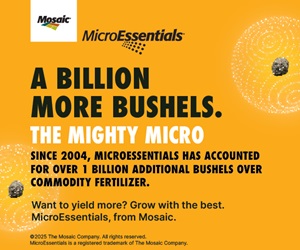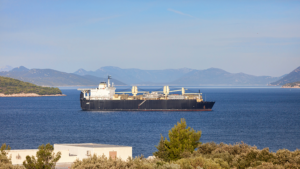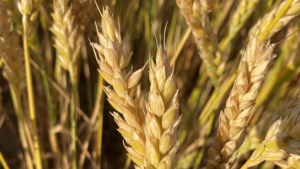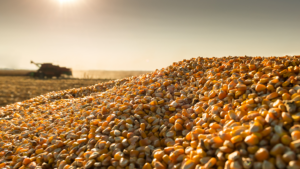Talking about fertilizer
ONGOING SUPPLY AND PRICING CHALLENGES
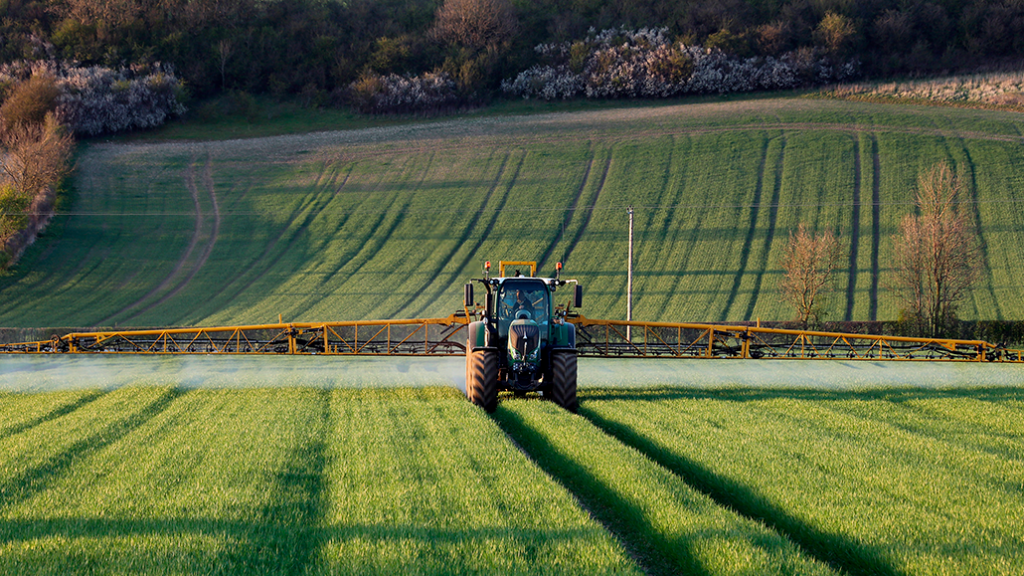
“FERTILIZER SHORTAGE KEEPING lobbyists busy: top issue for most-lobbied MPs.”
That was a Hill Times headline — Canada’s top politics and government news service — this summer in an article outlining the first six months of the lobby activities in Ottawa in 2022. And the meetings haven’t stopped. In September 2022, Grain Farmers of Ontario was again recognized for having the most meetings with Ottawa MPs on fertilizer.
All of this lobbying activity by Grain Farmers of Ontario is in response to the actions of March 3, 2022 — when the federal government implemented a 35 per cent tariff on all Russian imports and imposed sanctions that didn’t allow vessels carrying fertilizer into Canada from the region. The timing of the government’s actions on fertilizer imports was more than unfortunate for grain farmers. Spring is when the St. Lawrence Seaway thaws, and fertilizer shipments begin just in time for planting. Grain farmers east of Manitoba were left scrambling because they were depending on their prepaid fertilizer deliveries to arrive.
According to the survey conducted by RealAgristudies, commissioned by Grain Farmers of Ontario to get real-time data to share with the government, farmers faced increased fertilizer pricing, rationing of supplies, and tariff surcharges for the spring 2022 plant. In the end, farmers received the fertilizer needed to grow the grain for this year’s crop. A combination of the delay in the planting dates, quick action by fertilizer importers who switched out shipments at the last minute, and the Canadian government’s action to allow shipments into Canada all lined up just in time. But it was a close call — and a wake-up call.
ONGOING CONCERNS
The tariffs and sanctions imposed on March 3, 2022, was an economic blow to Ontario’s farmers, and the situation remains concerning for 2023. Global fertilizer supply and pricing continue to be a concern as a series of once-in-a-life-time events that have been impacting fertilizer supply and price continue to unfold, leaving experts concerned about shortages this year and no relief until 2024.
Farmers in Ontario, Quebec, and Atlantic Canada rely heavily on fertilizer imports. Approximately 700,000 tonnes of nitrogen fertilizer is imported annually, representing 85 to 90 per cent of the total nitrogen fertilizer used east of Manitoba.
Grain Farmers of Ontario, the Atlantic Grains Council, the Quebec Grain Farmers, the Ontario Bean Growers, and the Christian Farmers Federation of Ontario have come together with companies and stakeholders in the fertilizer supply chain. Together this group is working to compel the federal government to take action.
The group is sending a singular message: the money paid by farmers because of the tariffs needs to be compensated back to farmers, and the sanctions and tariffs on fertilizer need to be removed to ensure that the 2023 planting season is not affected.
In addition to meeting with MPs, Grain Farmers of Ontario and stakeholders have engaged in an active media relations campaign, resulting in extensive coverage of the issue in major English and French media outlets. The media has greatly understood the issues and what is at stake.
The Grain Farmers of Ontario Grain for Good program and advertisements on Facebook, Twitter, and Instagram have received a good response from Ontario consumers, who have sent almost 15,000 letters of support to the federal government.
IMPACT OF FERTILIZER SHORTAGES
Global food insecurity continues to rise, and Canada is well-positioned to help mitigate its impact. However, farmers need a secure, predictable supply of fertilizer to maximize crop yields.
Out of concern for food production shortages, António Guterres, secretary-general of the United Nations, has pleaded with nations worldwide “to remove the obstacles that still exist in relation to the export of Russian fertilizers because it is absolutely essential.”
Farmers cannot control where their fertilizer comes from; asking for the removal of tariffs is not a question of support for the people of Ukraine. Support for the people of Ukraine is strong, and without question, the condemnation of the Russian invasion is the correct course of action. Action by the Canadian government and our allies to quickly end the war is essential. Farmers need the Canadian government to be aware that their actions cannot jeopardize Canada’s capacity to produce food today or in the future.
LOOKING TO THE FUTURE
Longer-term solutions for fertilizer supply need to be explored. Canada is rich in resources, but the supply and infrastructure are not in place for Canada to provide the nitrogen required for farmers east of Manitoba. Josh Linville, Stone X’s global fertilizer expert, is preparing a report for Grain Farmers of Ontario examining the possible longer-term solutions Canada can explore, which will have launched by the printing of this magazine. In the short term, Grain Farmers of Ontario will continue to ask the government to follow the other G7 nations, remove the tariffs and sanctions on fertilizer imports, and compensate farmers impacted in 2022 by the additional costs of the tariffs.
Debra Conlon is director of government relations at Grain Farmers of Ontario.
WHAT HAS CAUSED FERTILIZER SUPPLY ISSUES?
- August 2020: Derecho event in the U.S. Corn belt devastating 3.57 million acres of corn and 2.5 million acres of soybeans.
- August 2020: Coronavirus Food Assistance Program (CFAP) started to arrive and, combined with high grain prices, led to the highest-ever demand for fertilizer in recent history.
- February 2021: Arctic Blast caused home-heating demand to spike sharply, which carried natural gas prices with it. Consequently, North American nitrogen production facilities implemented a short-term production closure.
- August 2021: Hurricane Ida damaged some of the largest fertilizer production plants in the world.
- September 2021: Russia threatened to cut natural gas shipments to Europe. The Dutch TTF increased substantially and curtailed European production by 40 per cent.
- Lead up to the Olympics: China limits fertilizer exports. As fertilizer supplies became tighter in North America and Europe, nations worldwide limited exports to ensure domestic availability.
- February 2022: Russia’s invasion of Ukraine increased the price shock.
- March 2022: Canada puts 35 per cent tariffs and sanctions on fertilizer imports from Russia and Belarus.
- August 2022: Cutting off Europe’s natural gas supply forced production reductions and increasing prices.


